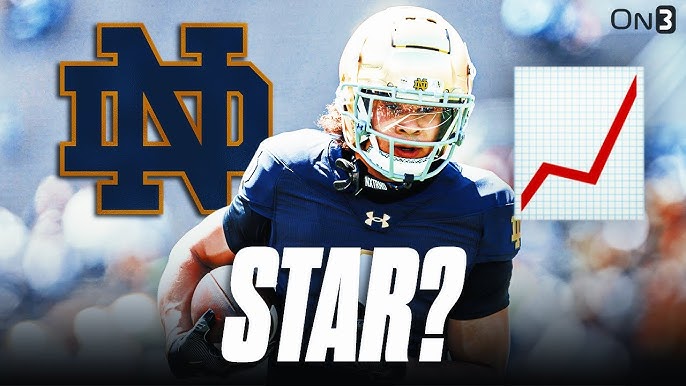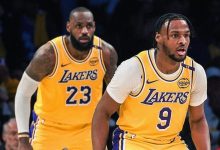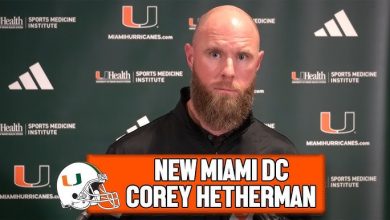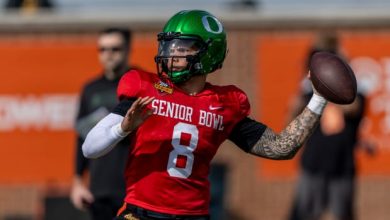A Deep Dive into Notre Dame Football recruiting Class.

Notre Dame football recruiting has long occupied a unique place in the college football universe — a careful dance of tradition, academic rigor, national exposure, and the relentless pursuit of elite talent. From coast to coast, the gold helmet still carries an almost mythic pull, drawing in prospects who want to be developed, educated, and remembered. But in the rapidly evolving recruiting landscape, where NIL money, transfer portals, and conference realignment dominate headlines, how does Notre Dame still carve out its path? A deep dive into its current recruiting class offers answers — and clues about where the program is headed.
Notre Dame’s 2025 and early 2026 recruiting hauls reflect a philosophical clarity that is becoming more evident with each cycle under head coach Marcus Freeman. Gone are the days when the Irish played catch-up with other blue-blood programs. Under Freeman, recruiting isn’t just prioritized — it’s elevated. There is a relentless, year-round energy emanating from the staff, and it’s starting to yield not just top-15 classes, but balanced, foundational groups built for long-term success. The current class reveals a multi-pronged approach — one that blends national reach with local stability, high-upside development projects with plug-and-play readiness, and perhaps most importantly, character and fit over social media flash.
Notre Dame’s recruiting is, as always, rooted in selectivity. They aren’t chasing every five-star athlete; they’re chasing the right ones. Players who value academics. Players who want to be coached hard. Players who understand the legacy they’re stepping into. The staff is constantly reinforcing this message: Notre Dame is not for everyone, but for those it is for, it can be transformational. That tone, while not always splashy, is resonating with families, especially those who still value stability and preparation for life beyond football.
At quarterback, the Irish staff has been deliberate. The commitment of four-star signal-caller Deuce Knight, a dynamic, dual-threat lefty out of Mississippi, was not just a recruiting win — it was a statement. Knight had offers from Alabama, Tennessee, Florida State, and Ole Miss, yet chose South Bend. His blend of size, arm talent, and humility makes him an ideal fit for Notre Dame’s future. His early commitment has also played a huge role in the class’s cohesion, as he’s served as a vocal peer recruiter on social media and in private group chats, encouraging top-tier talent to join him. In an era where quarterback movement dominates the headlines, locking down a true leader at the most important position is foundational — and Notre Dame did just that.
On the offensive line, the class once again mirrors the program’s identity. Offensive line play is a pillar of Notre Dame football, and the staff continues to bring in rugged, intelligent, well-coached linemen who embrace physicality. Names like Owen Strebig and Will Black represent not just athleticism and frame but technique and work ethic. These are linemen who can play early but also have the mental makeup to develop over three to four years. There’s a clear emphasis on versatility — tackles who can slide inside, centers who can anchor pass protection and call out blitz pickups. That position group, perhaps more than any other, speaks to Notre Dame’s brand of football: tough, detail-oriented, and consistent.
Skill positions, particularly wide receiver and tight end, have often been tricky terrain for the Irish — especially in the NIL era, where speed and flash sometimes attract faster than substance and development. But this cycle marks a turning point. Notre Dame has secured commitments from multiple top-end skill position players, most notably wide receiver Elijah Burress, the son of former NFL star Plaxico Burress, who brings elite size and hands, and tight end Preston Zinter, a high-upside athletic mover with length and explosion. The Irish are also firmly in the mix for several other four-star receivers and are beginning to shake the outdated narrative that they can’t attract perimeter game-breakers. Much of that credit goes to position coaches who’ve made major inroads, as well as Freeman’s own involvement in closing key visits. Notre Dame is reminding offensive weapons that they can thrive in an NFL-style system while also being showcased on a national stage with a degree in hand.
Defensively, Notre Dame continues to build through the front seven. The current class is loaded with hybrid edge rushers and athletic linebackers who can cover in space but also strike at the point of attack. The commitment of Davion Dixon, a physically imposing lineman from Florida, turned heads across the recruiting industry. Notre Dame beat out SEC programs for a player who many project as an instant contributor. Similarly, the Irish are bringing in rangy linebackers who can run, hit, and diagnose — the kind of defenders needed to compete against modern, up-tempo offenses.
In the secondary, the staff has focused on length, speed, and intelligence. Several current commits, like cornerback Dallas Golden and safety Ivan Taylor, the son of former NFL Pro Bowler Ike Taylor, bring high football IQ and positional versatility. There’s an emphasis on players who can play multiple spots in the back end, disguise coverages, and communicate — a critical asset in Notre Dame’s evolving multiple-look defense. The staff has also improved its reach in the Southeast and West Coast, breaking into pipelines traditionally dominated by Georgia, Florida, and USC. That national footprint, long a strength of Notre Dame recruiting, is now being leveraged more strategically than ever.
It’s also worth noting how NIL has changed the recruiting terrain — and how Notre Dame is navigating it. While the school hasn’t engaged in outright bidding wars, the Irish have created a structure through groups like Futures Foundation that provides transparency, education, and sustainability for incoming players. Recruits are told upfront what Notre Dame does and doesn’t offer — and that honesty, counterintuitively, is attracting families wary of the transactional chaos elsewhere. The Irish message is simple: come here to build your brand the right way. Through performance, discipline, and long-term value.
The class’s cohesion is perhaps its most underrated asset. These players aren’t just committing to Notre Dame — they’re forming bonds with one another well before stepping on campus. Group chats, campus visits, and social media collaborations are creating a sense of family and mission. It’s no accident that many of the current commits have spoken publicly about the culture Marcus Freeman is creating — one of trust, modern thinking, and unified vision. Freeman himself is deeply hands-on with the recruiting process. He makes phone calls. He visits families. He FaceTimes recruits after practice. That authenticity can’t be faked, and it’s setting Notre Dame apart.
The staff’s organization also deserves mention. Recruiting director Chad Bowden and his team have developed a modern infrastructure — one that allows for constant evaluation, film review, and digital engagement. Notre Dame’s campus visits are tailored to highlight both the athletic and academic sides of life in South Bend. Recruits meet with professors, tour tech facilities, and are introduced to life after football before they even enroll. That holistic approach resonates with high-character players and their families. It’s not just about the four years — it’s about the forty that follow.
There’s also momentum building around early commitments. Notre Dame has made it a priority to identify top targets early and bring them into the fold before other schools can make late pushes. This early-commit strategy allows the staff to shift focus mid-cycle toward finishing strong and being selective. It also minimizes risk, as the staff is betting on their evaluations rather than solely relying on recruiting services. That blend of conviction and flexibility is what successful programs like Georgia and Alabama have done for years — and Notre Dame is now replicating it.
Recruiting, of course, is never static. Even the best classes can see flips, surprises, or late additions. But what Notre Dame has built in this current class — and what it’s clearly building toward in 2026 and beyond — is a sustainable model. One based on consistency, national reach, modern vision, and cultural alignment. The rankings matter, but the fit matters more. And as those who’ve followed Notre Dame football closely know, the program’s greatest eras have always been rooted in players who understood the weight of the jersey — and the privilege of earning it.
As the summer rolls on and more visits are scheduled, the Irish are not done yet. The staff remains in contact with several uncommitted blue-chippers who could elevate this class from very good to elite. More than a dozen current commits are expected to return for official visits, strengthening bonds and locking in the group. Several potential late-cycle flips are in play, and there’s always the possibility of a big-name national recruit quietly choosing Notre Dame for reasons that go beyond hype.
The message is clear: Notre Dame isn’t trying to be everyone else. It’s carving its own path — one rooted in tradition, yes, but propelled by innovation, belief, and a fierce sense of identity. The current recruiting class reflects that perfectly. It’s balanced. It’s smart. It’s tough. And it’s built for the long haul.
Time will ultimately judge the success of any recruiting class. But if the foundation is any indication, Notre Dame isn’t just stacking talent — it’s building a team, a culture, and a future that looks ready to compete with anyone in the country.









